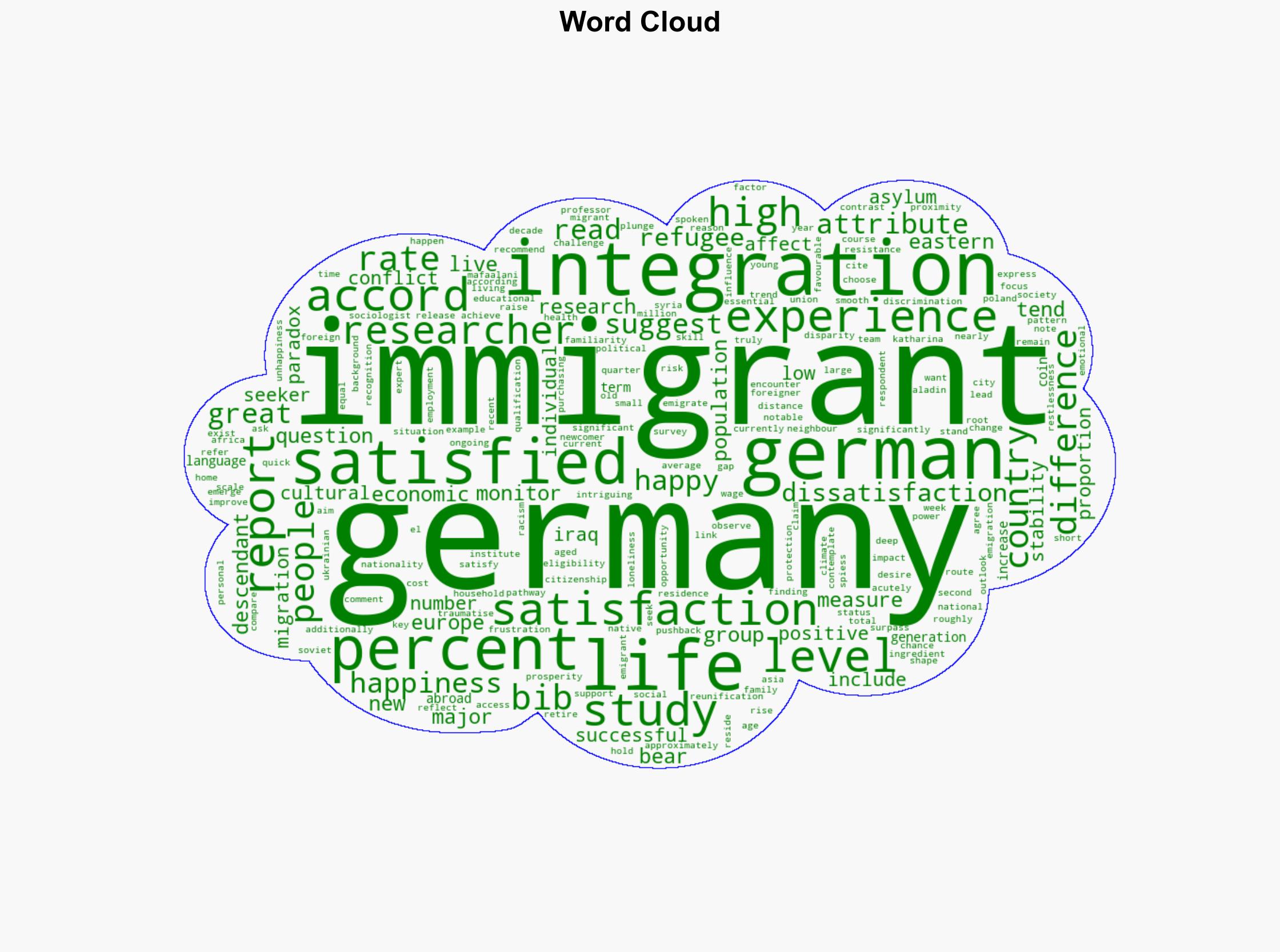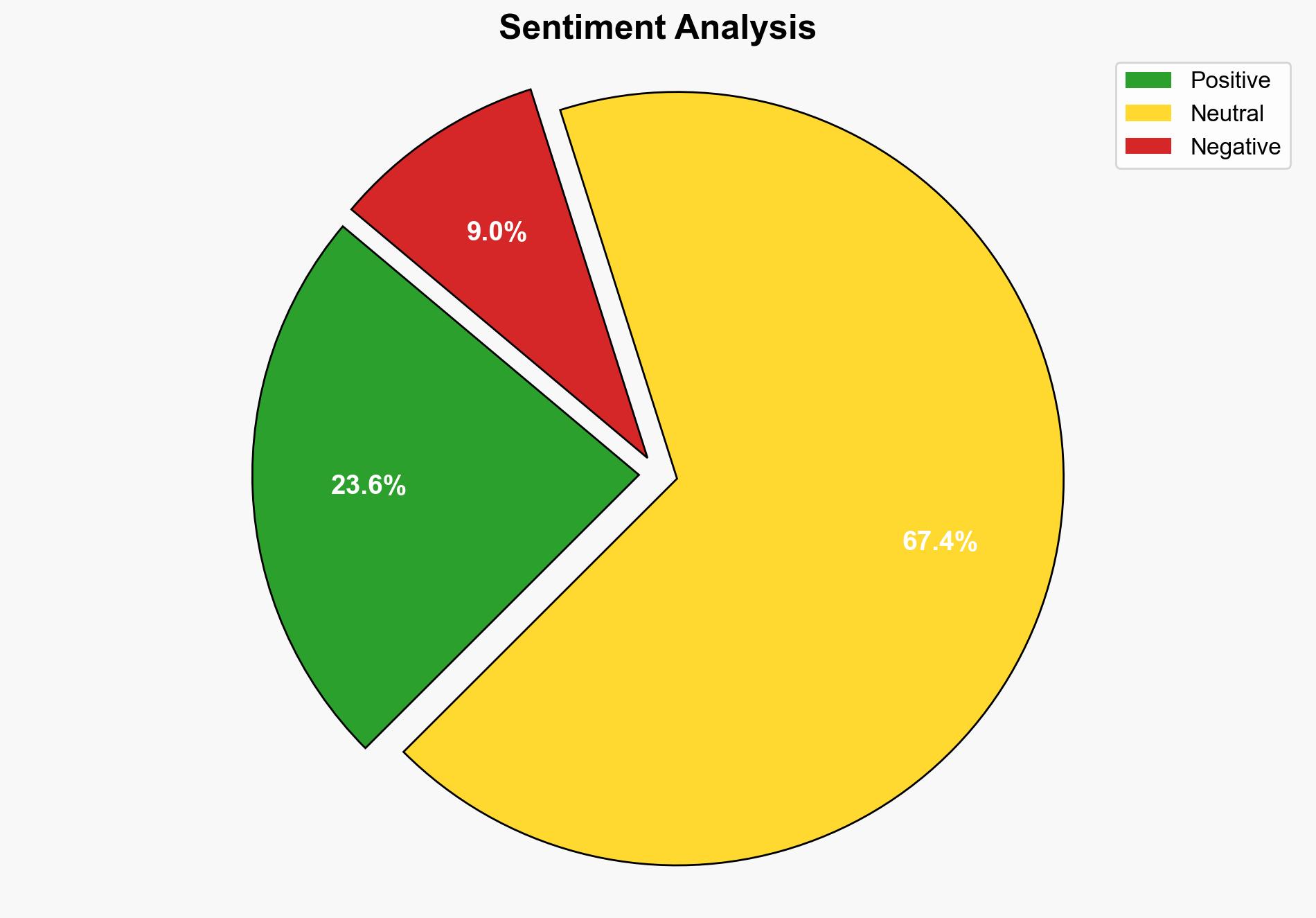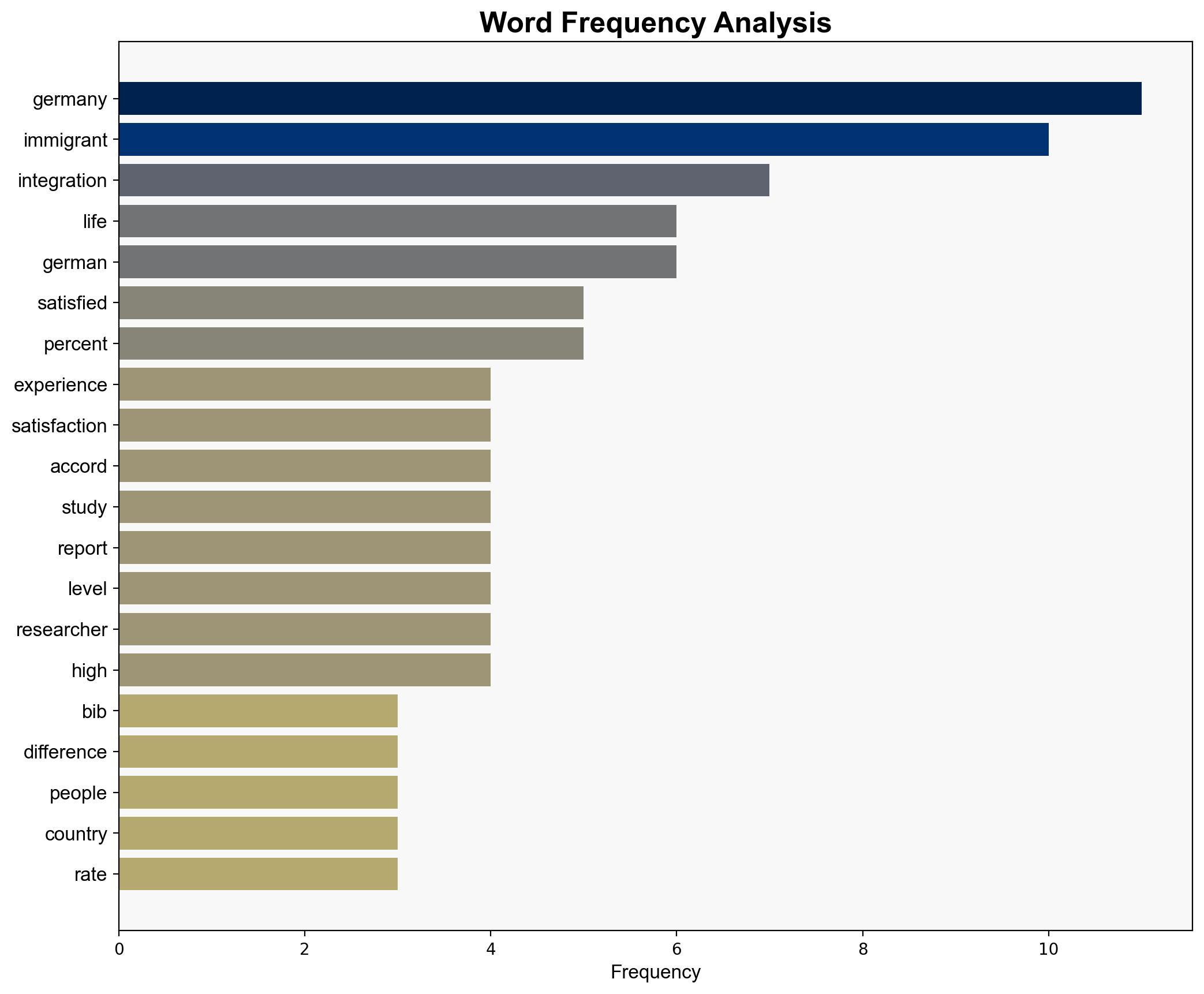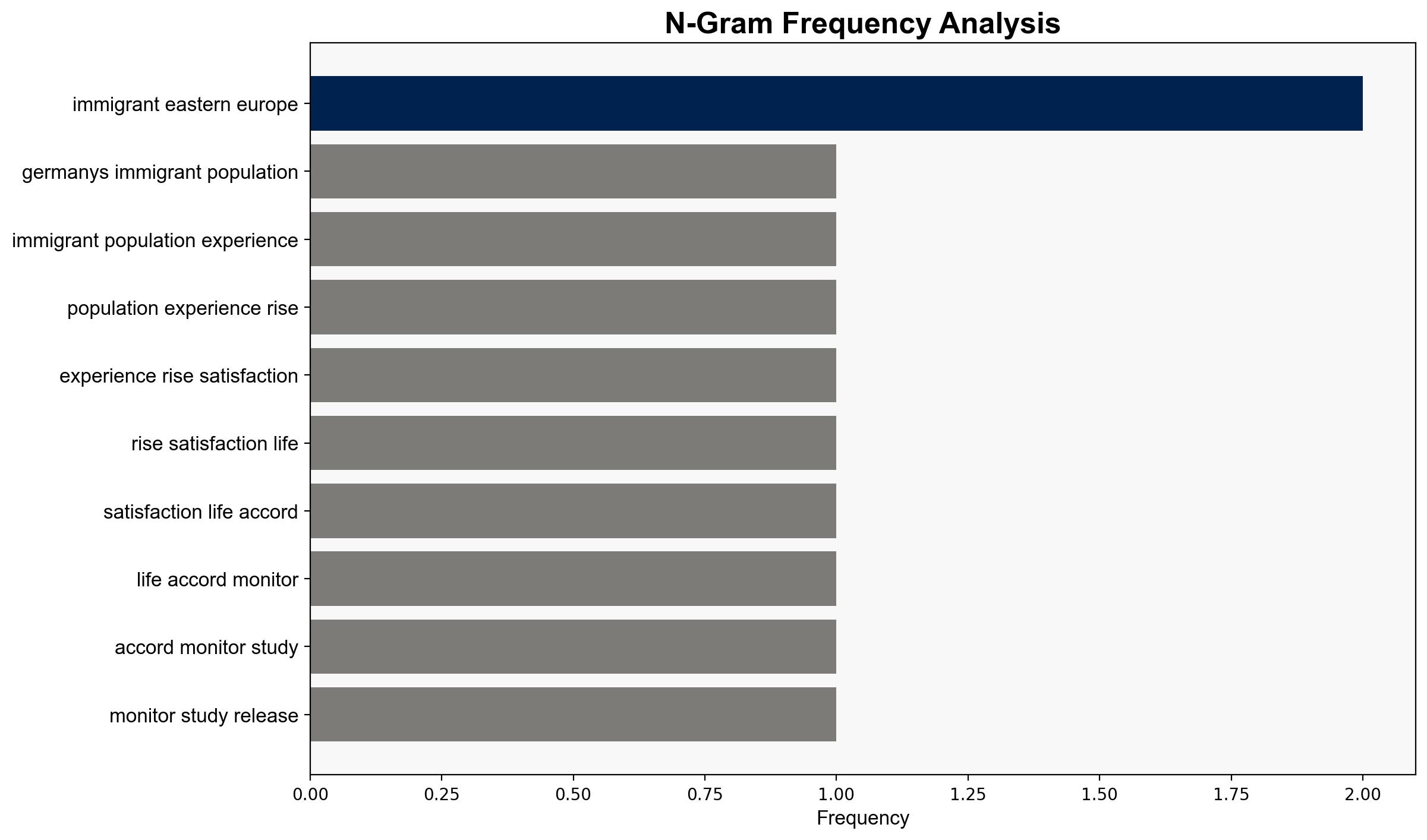Who are the happiest immigrants in Germany – The Local Germany
Published on: 2025-10-30
Intelligence Report: Who are the happiest immigrants in Germany – The Local Germany
1. BLUF (Bottom Line Up Front)
The analysis suggests that Eastern European immigrants in Germany report higher life satisfaction compared to other immigrant groups, potentially due to cultural proximity and stable migration pathways. However, the integration paradox indicates that successful integration may lead to increased frustration and conflict. Confidence in these findings is moderate due to potential biases and data limitations. Strategic recommendation includes enhancing integration policies to address disparities and improve social cohesion.
2. Competing Hypotheses
1. **Hypothesis A**: Eastern European immigrants report higher life satisfaction due to cultural proximity and stable migration pathways, leading to smoother integration and greater happiness.
2. **Hypothesis B**: The reported satisfaction among Eastern European immigrants is overstated due to social desirability bias or selective reporting, masking underlying integration challenges similar to other groups.
Using ACH 2.0, Hypothesis A is better supported by the data, as the study highlights cultural proximity and stable pathways as key factors. However, Hypothesis B cannot be entirely dismissed due to potential biases in self-reporting and the complexity of measuring life satisfaction.
3. Key Assumptions and Red Flags
– **Assumptions**: Cultural proximity and migration stability are primary drivers of immigrant satisfaction.
– **Red Flags**: Potential bias in self-reported data; lack of longitudinal data to track changes over time; limited representation of diverse immigrant experiences.
– **Blind Spots**: The impact of economic factors and discrimination on immigrant satisfaction is not fully explored.
4. Implications and Strategic Risks
– **Patterns**: The integration paradox suggests that increased integration efforts may lead to heightened expectations and potential dissatisfaction.
– **Risks**: Failure to address integration disparities could lead to social unrest and increased polarization.
– **Economic and Psychological Dimensions**: Economic stability and mental health support are crucial for improving immigrant satisfaction and integration outcomes.
5. Recommendations and Outlook
- Enhance integration policies with a focus on economic stability, mental health support, and cultural exchange programs.
- Conduct longitudinal studies to better understand immigrant satisfaction trends over time.
- Scenario Projections:
- Best Case: Improved integration policies lead to increased immigrant satisfaction and social cohesion.
- Worst Case: Continued disparities result in social unrest and increased polarization.
- Most Likely: Incremental improvements in integration policies yield moderate gains in immigrant satisfaction.
6. Key Individuals and Entities
– Katharina Spiess: Lead researcher of the study.
– Aladin El Mafaalani: Integration expert referenced in the study.
7. Thematic Tags
immigration, integration, social cohesion, cultural proximity, economic stability





